CONSERVATION TARGETS
SA needs to preserve the equivalent of Kruger Park each year to meet UN goals
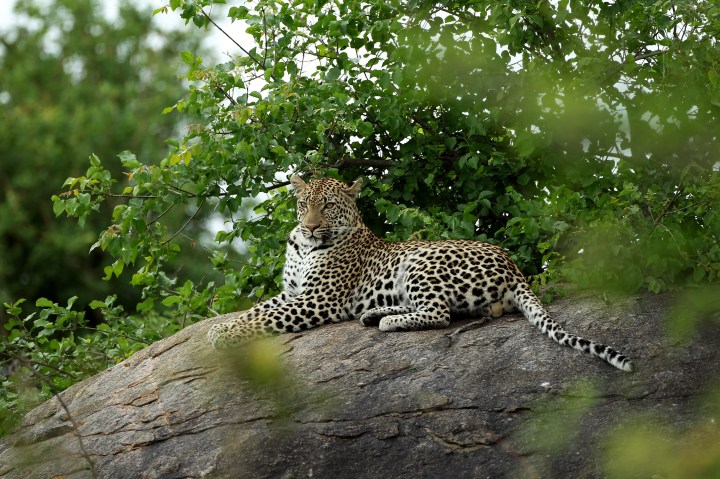
If we want to put 30% of our land under conservation estate — as the SA government committed to do at the last UN Biodiversity Conference — we’d need to protect the equivalent of the Kruger National Park, and then some, every year from now until 2030.
‘This is the first of the many conversations we will be having,” said Mohlago Flora Mokgohloa, deputy director-general of the Department of Forestry, Fisheries and the Environment (DFFE), during a consultative workshop on Tuesday.
The three-day implementation workshop with government officials, researchers, NGOs and indigenous people is being held in Boksburg this week to find ways to implement the headline “30×30” protected areas target from the last UN Biodiversity Conference agreement.
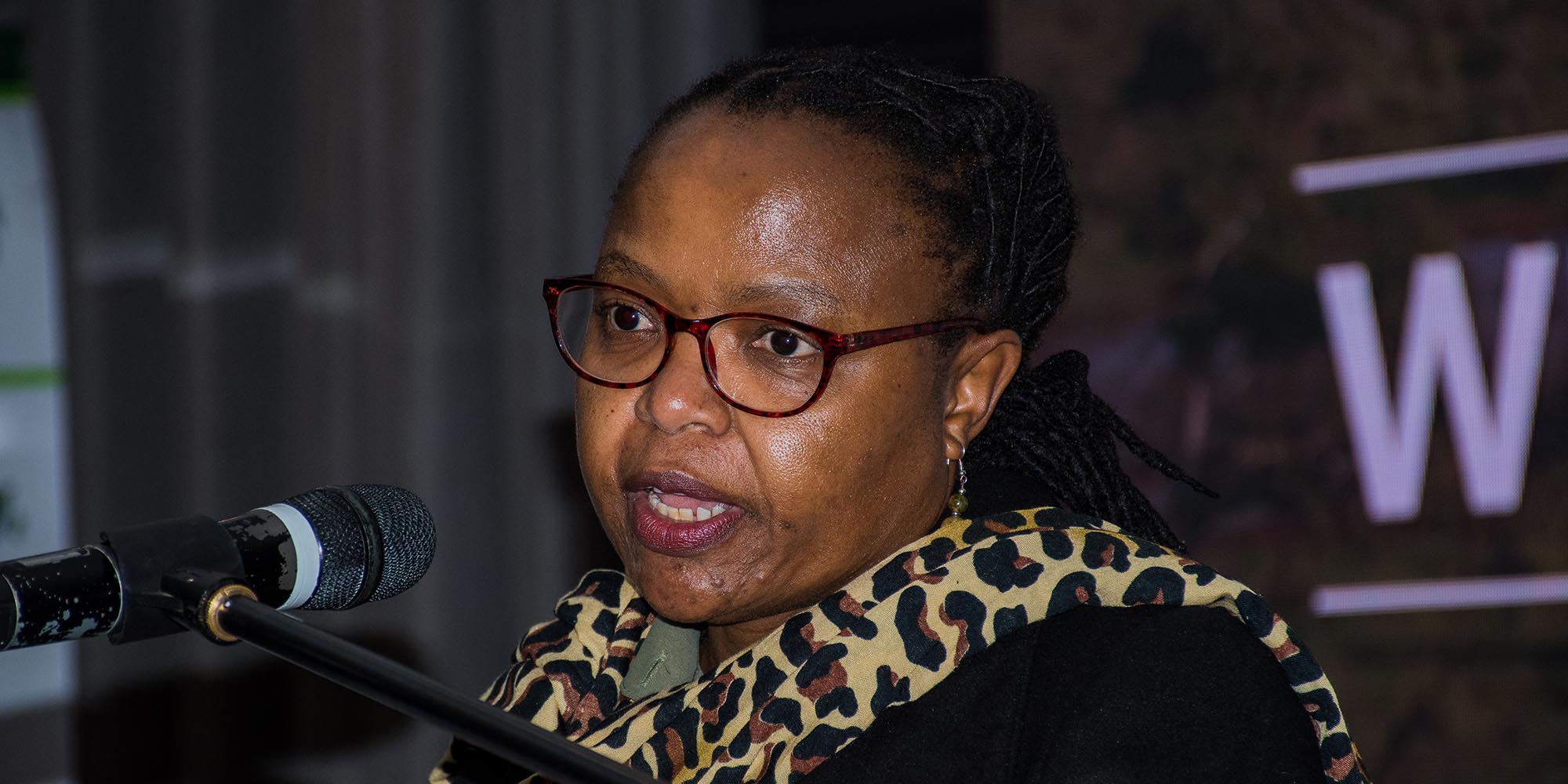
Department of Forestry, Fisheries and the Environment Deputy Director-General Mohlago Flora Mokgohloa delivers the opening address on 6 June 2023 at the workshop on the implementation of the ‘30 by 30’ target of the UN’s Kunming-Montreal Global Biodiversity Framework. (Photo: Julia Evans)
The 30×30 target aims to effectively conserve at least 30% of the world’s lands, freshwater and oceans by 2030, while also respecting the rights and contributions of indigenous peoples and local communities.
“And we need to, at some stage, much sooner – and I’m saying much sooner – start to move into real action… get out of the air-conditioned rooms and go out to the ground and really start to do real work working with the people,” said Mokgohloa, who is the deputy DG of the department’s biodiversity and conservation branch.
Read more in Daily Maverick: Another COP? Here’s what you need to know and why you should care
During COP15, held in Montreal, Canada, last year, implementation was a key theme. The last time countries that are part of the UN’s Convention on Biological Diversity (CBD) treaty set biodiversity targets, in 2010, none was adequately met by the deadline.
So they tried again, and in December 2022 – along with 195 other nations party to the CBD – South Africa adopted the Kunming-Montreal Global Biodiversity Framework, or “the new deal for people and nature”, committing the world to implement 23 targets by 2030 and four goals by 2050 with the aim of halting and reversing biodiversity loss.
Read more in Daily Maverick: Historic moment for nature and humanity as Kunming-Montreal framework adopted at UN biodiversity conference
Before SA committed to the 30×30 target, we had the National Protected Area Expansion Strategy from 2016 which committed South Africa to achieve 28% of land and water protection by 2036, with the ultimate target to eventually conserve 36%.
The plan was to increase protected areas by half a percent a year, funded by the government. But Mokgohloa emphasised that as only 1% of the fiscus went toward conservation (public expenditure is the largest contributor to conservation), SA would need a lot more money to reach the 30% target by 2030.
Read more in Daily Maverick: Can we achieve the multibillion-rand target we committed to at COP? Minister Creecy thinks not
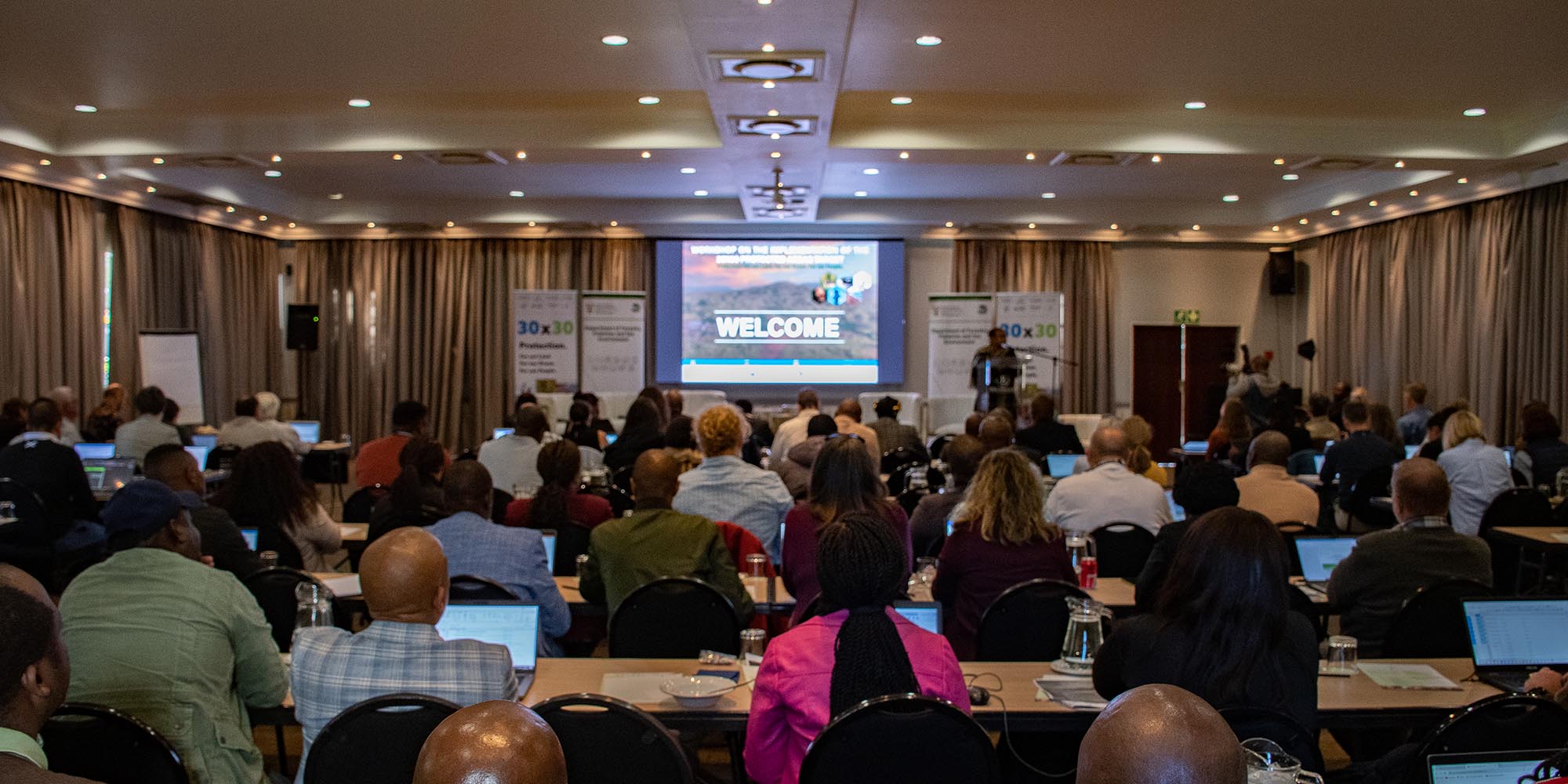
Day one of the consultative workshop on the implementation of the ‘30 by 30’ target of the UN’s Kunming-Montreal Global Biodiversity Framework hosted by the Department of Forestry, Fisheries and Environment on 6 June 2023 in Boksburg, Gauteng. (Photo: Julia Evans)
Mokgohloa said her department’s implementation plan aligns with both the Kunming-Montreal Global Biodiversity Framework and SA’s recently gazetted White Paper on the Conservation and Sustainable Use of Biodiversity, which, if implemented, could be groundbreaking for biodiversity.
How much of SA’s land and seas are protected?
“If we want to hit the target by 2030, we’ll need another 16 million hectares to be added to the estate. That’s adding [the equivalent of] the Kruger National Park and a bit every year to hit the 2030 target,” said Karl Naude, the director of protected area planning at the DFFE.
Currently, 17% and 10% of the world’s terrestrial and marine areas, respectively, are under protection, although the Marine Conservation Institute emphasises that of the 10%, only 2.9% of the ocean is fully or highly protected from fishing impacts. In South Africa, the numbers can be equally misleading.
According to the DFFE, 16.75%, or just more than 20 million hectares, of the total 121 million hectares of land in South Africa is under conservation. This includes freshwater resources like some parts of strategic water source areas.
But Naude explained that of the 16.7%, only 9.8% is considered a “protected area”; in other words, formally declared under the National Environmental Management: Protected Areas Act (Nempaa). This includes national parks, world heritage sites and nature reserves.
The remaining 6.8% is considered “conservation areas”, which are not declared by Nempaa but classified by other legal instruments as national botanical gardens, biosphere reserves or Ramsar sites.
In terms of water marine protections, 14.5% of South Africa’s waters are in marine protected areas, but Steve Kirkman, specialist marine scientist for DFFE, explained that just 5.4% of SA’s marine environment around mainland South Africa is under protection conservation. The large Prince Edwards Islands marine protected area in South Africa’s Southern Ocean territory accounts for most of the 14.5% figure.

To get to SA’s medium-term target of protecting 10% of mainland marine areas, we need to protect a further 48,800km2 – which is equivalent to the size of Lake Victoria, the largest lake in Africa.
Kirkman explained that South Africa’s marine protected network represents 87% (131) of the 150 marine and coastal ecosystem types – which is pretty good.
“Compared to some other countries that report much higher protection – and have quite a lot to say about it in the marine area – some of the networks are much less systematically obtained and less ecologically coherent than our one,” said Kirkman during a presentation at the workshop.
Kirkman explained to Daily Maverick: “Marine protection globally is generally not very ecologically representative… it is skewed to coastal and inshore areas and large remote places where there are few threats anyway.”


Kirkman said if you look at the Marine Conservation Institute’s Marine Protection Atlas and consider a country like Brazil – which reports very high marine protection, at 26% considered either highly or less protected – the distribution of Brazil’s Marine Protected Areas (MPAs) are not very representative of marine and coastal ecosystem types.
“Which could indicate that they are putting MPAs where it’s convenient as opposed to where it’s needed,” said Kirkman, “and looking good politically by reporting a very high percentage.
“But if you were to compare the other attributes of target three [30×30], they would not look so great. Which is a problem with there being so much political emphasis on quantity.”
Kirkman indicated the same could be seen in countries like the UK, the US and France.

While Kirkman said that while SA’s marine protected network represents 87% of marine ecosystem types is something to be proud of, the remaining 13% of ecosystem types are considered “not protected” and a further 15% are “poorly protected.”
Ecosystem types either not represented or underrepresented in the network include many offshore ecosystem types, the West Coast, and, in particular, estuaries, according to research by the DFFE and CSIR.
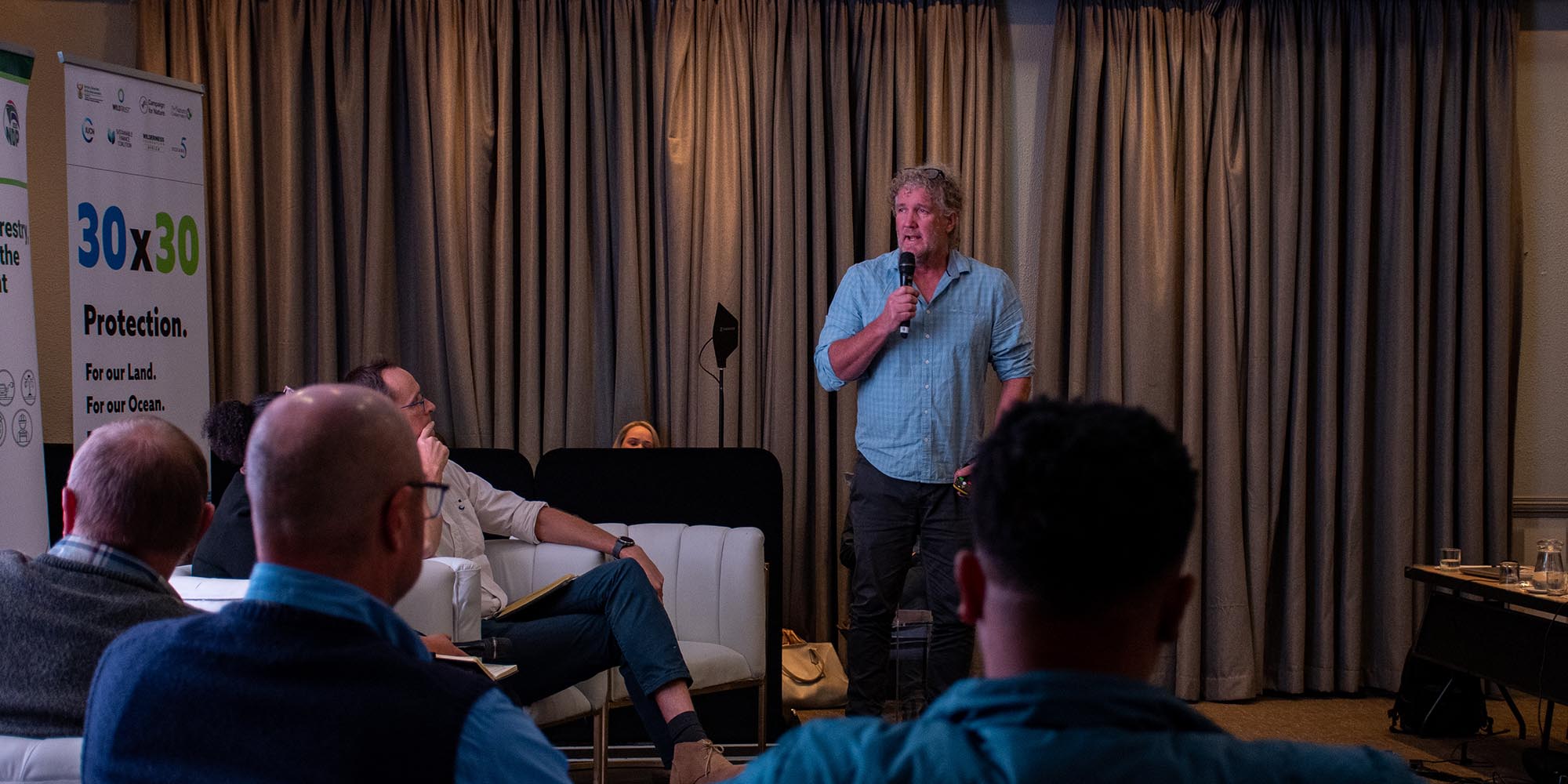
DFFE oceans and coast specialist scientist Steve Kirkman presents South Africa’s marine protected areas during the workshop on 6 June 2023 on the implementation of the ‘30 by 30’ target of the UN’s Kunming-Montreal Global Biodiversity Framework. (Photo: Julia Evans)
“And we haven’t yet given due consideration to things like ecological connectivity, replication or climate resilience in the design of our particular area networks, and we need to do that,” said Kirkman.
Additionally, because most of the 14.5% of the country’s waters that are reported protected are in the Southern Ocean – far away from mainland SA – overall we are not representative.
That said, SA has a very good design to build on, which includes coastal/inshore as well as offshore MPAs that are representative of the distribution of most ecosystem types.
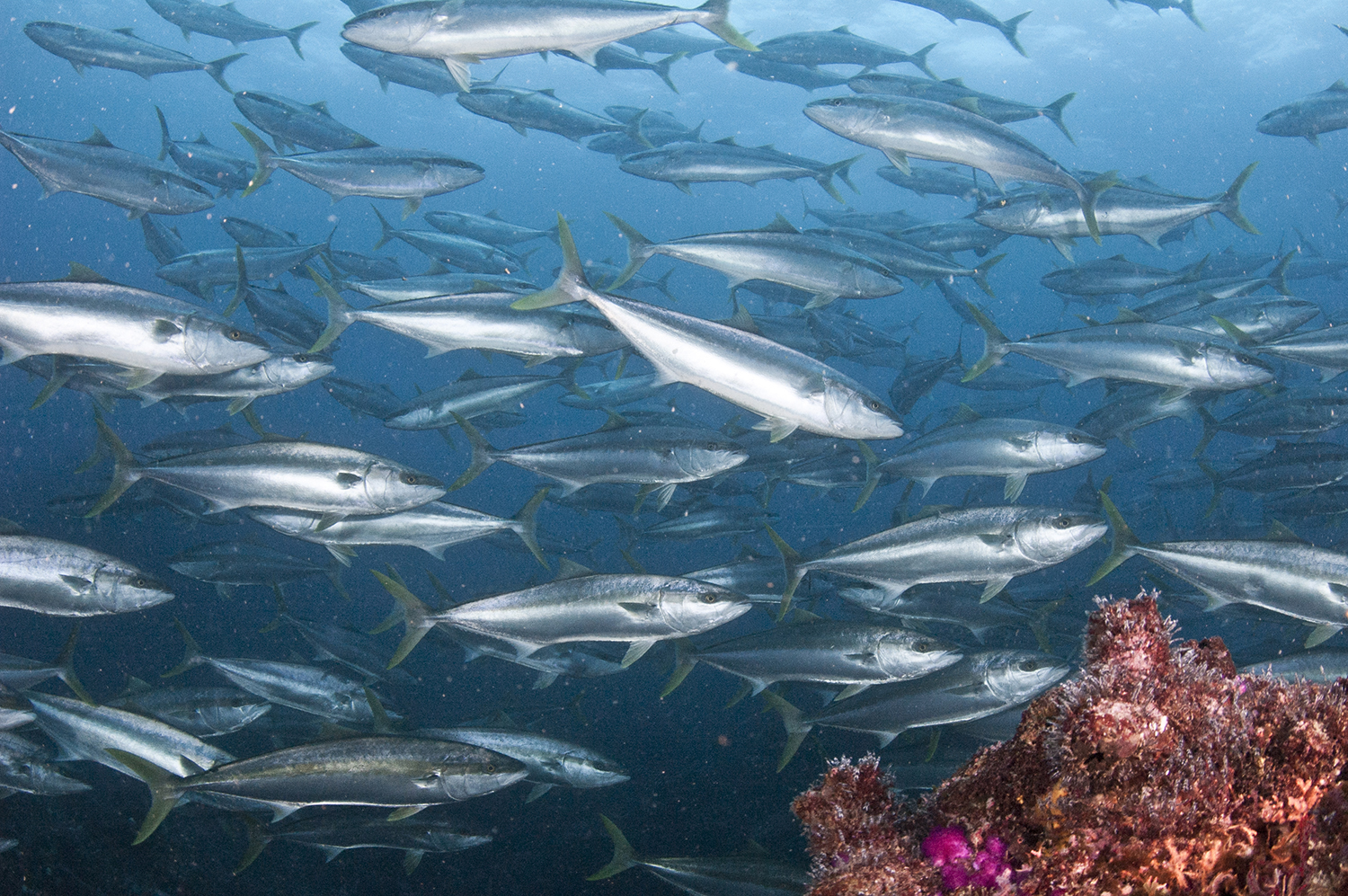
A school of yellowtail in the De Hoop Marine Protected Area in the Western Cape. (Photo: Steve Benjamin)
Rights of indigenous people
“Gone should be the days when people just see safari vehicles driving into parks close to them and yet they can’t even access the places,” said Mokgohloa during her opening address.
“We need to bring these people on board so that they form part of the work we are doing. The only way we can win the war against poaching, as an example, is that we involve people in the work that we are doing.”
Mokgohloa explained that along with the 30×30 target, one of the central tenets of the Kunming-Montreal Framework is that communities living in and adjacent to conservation estates should benefit from the economic opportunities created there.
“Our commitment to target three goes beyond just protecting our environment. It is also about recognising the close linkages between biodiversity and the wellbeing of our communities,” said Mokgohloa
“We know that many indigenous peoples and local communities rely on biodiversity for their livelihoods and cultural identity.”
Mokgohloa said that by preserving ecosystems, we are not only safeguarding the natural world but also promoting sustainable development and social justice, which are goals that underpin the new White Paper on Conservation, our National Development Plan and our Constitution. DM
To read all about Daily Maverick’s recent The Gathering: Earth Edition, click here.









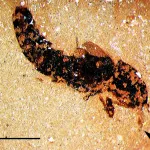
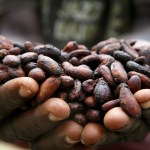







 Become an Insider
Become an Insider
The actual allocation to the entire Environment function of Govt according to STats SA is 0,6%. The portion to conservation is about 0,05%. This is a crucial recalibration of what we spend and prioritise as a Nation. Would love to see a commitment to 1% of budget to conserving the life support systems of the country – as much as trying for 30% by 2030.